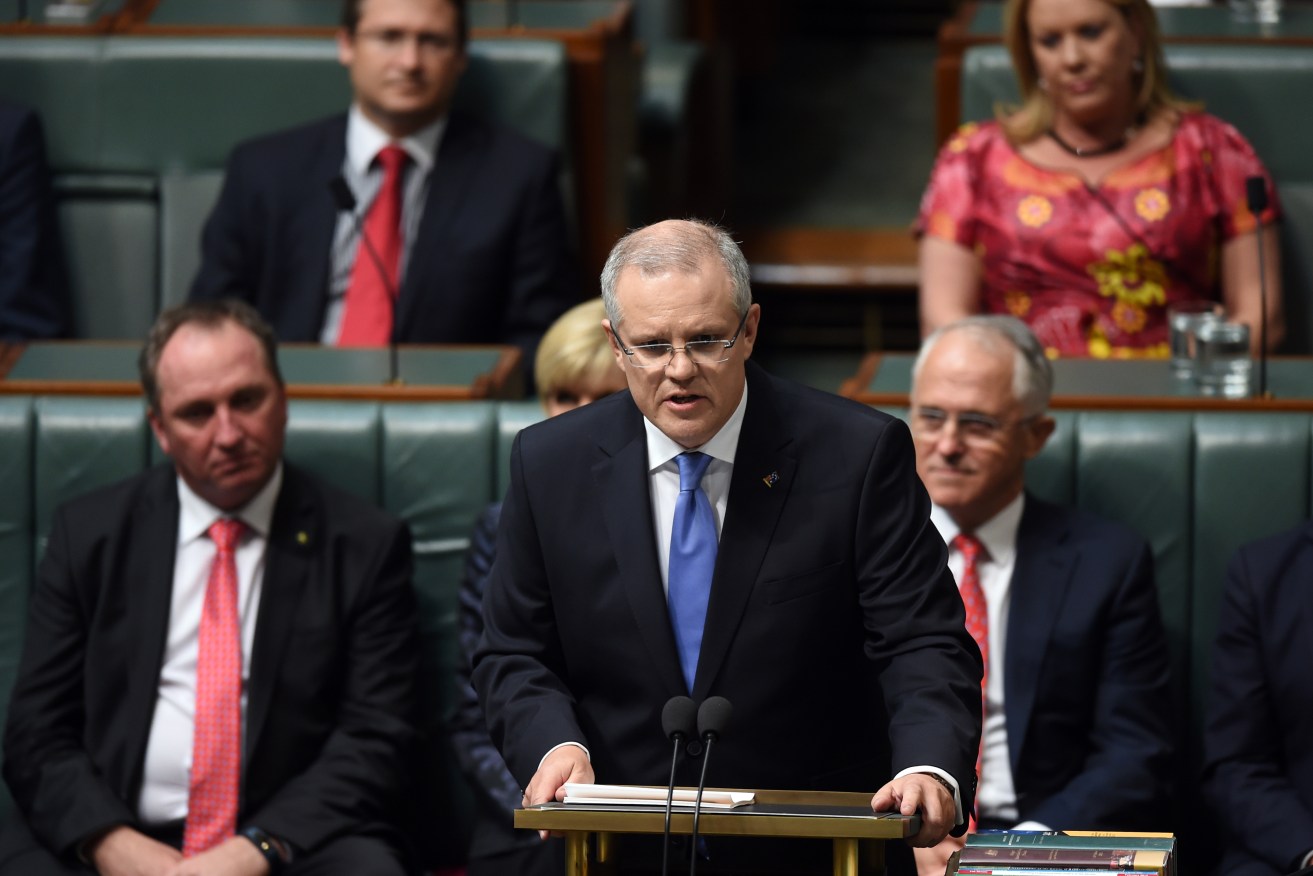Budget 2016: Tax cuts key to Morrison’s economic plan
Scott Morrison is banking on more tax cuts for the growing army of small businesses and an income tax break for 500,000 middle-income Australians to bolster the Coalition’s election hopes and drive the economy.

Federal Treasurer Scott Morrison delivers his Budget speech. Photo: AAP Image/Lukas Coch
However his economic message was blunted when the Reserve Bank delivered an unprecedented budget day cash rate cut to a record low 1.75 per cent, elevating fears the government is not doing enough to lift jobs and growth.
“This cannot just be another budget, because these are extraordinary times,” the federal treasurer said in delivering his first budget on Tuesday night.
“This budget is an economic plan.”
The budget forecasts a $37.1 billion deficit for 2016/17, a blowout from the $33.7 billion anticipated in the mid-year review in December.
However, the jobless rate of 5.5 per cent offers greater hope than anticipated last year.
Central to the government’s plans, ahead of a July 2 election, is a 10-year plan to gradually trim company tax, at a cost to the budget of $5.3 billion over the next four years.
The budget papers show over the long term, lower company tax is expected to add one per cent to GDP.
The small business tax rate, which was lowered in Joe Hockey’s 2015 budget, will go down a further point to 27.5 per cent with the turnover threshold increased from $2 million to $10 million.
From July 1, the upper limit for the middle-income tax bracket will rise from $80,000 to $87,000 a year – stopping around half a million workers from tumbling into the second-top marginal rate of 37 per cent.
Mindful of possible criticism over his tax plans, Morrison said jobs and growth were more important for Australians than “sweeteners”.
“This is not a time for splashing around money or increasing the tax burden on our economy or hardworking Australians and their families,” he said.
Generous superannuation tax breaks will be closed off from July 1, 2017, affecting about four per cent of Australians each year.
These will include the introduction of a transfer balance cap of $1.6 million on amounts moving into the tax-free retirement phase.
At the same time, about two million low-earning women are expected to benefit from a low income superannuation tax offset.
To get more young people into the workforce, a new program called Youth Jobs PaTH (Prepare, Trial, Hire) will start next year to give them pre-employment skills training, internships and provide businesses with a wage subsidy – at a cost of $752 million.
The government is banking on a 20-year defence industry plan, as well as $50 billion in infrastructure and $2 billion for new dams and pipelines to keep jobs flowing.
To ensure the budget is on track for balance in 2020/21, tobacco taxes will be hiked by 12.5 per cent a year from September 1, 2017, to raise $4.7 billion over four years.
A so-called Google tax, used in Britain, will be introduced while the Australian Taxation Office is given extra resources to reap $3.9 billion from a crackdown on multinational tax avoidance.
The budget played down funding for schools and hospitals, reiterating a deal signed with the premiers to deliver an extra $2.9 billion over three years for health and a $1.2 billion education funding top-up between 2018 and 2020.
AAP




